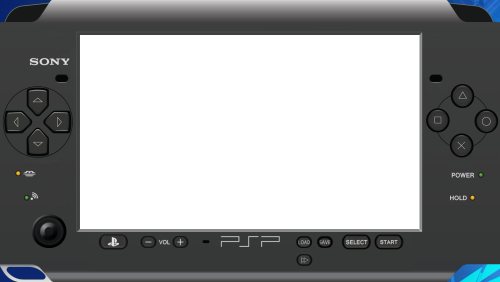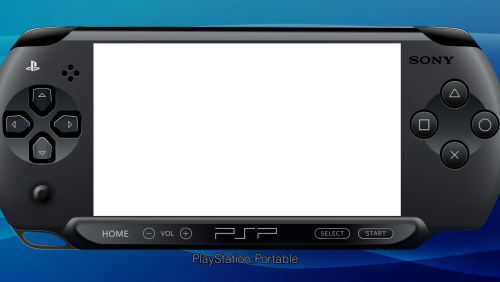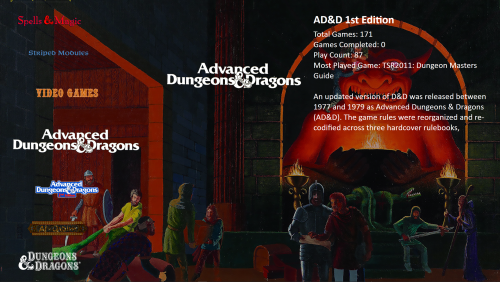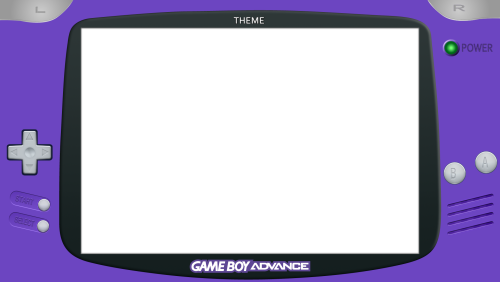Third-party Apps and Plugins
204 files
-
Mame No-Nag Updated Monthly, Current Version:
By MadK9
**This removes the nag screen that informs you if a rom doesn't work correctly, or if at all, if you use this no nag, then please do NOT go to the mame support site with issues with games, please only use if you understand that there will be no help from anyone at mamedev as you are using a modified version of mame.
Contents: mame.exe - Normal Mame with Nags removed. (Note mame no longer carries the 64 in its exe name changed by Devs in 0.229)
It's advisable to download the full mame official pack and install it, then just overwrite the exe with the replacement, this covers any changes the mame devs may have made to the support files.
After you have done this, make sure you copy the folders artwork, ctrlr, cheat, hlsl, ini, folders and the ini files from the root of your original mame folder, and move/copy them to the new install.
If you are using your own installed/setup of mame then make sure you also set in the mame.ini 'Skip_gameinfo 1'
If you got Launchbox to setup mame for you when asked, you only need to replace the exe and play.
As some are not sure about False Positives, and report a virus was detected, As goes for all versions i upload, they are all ran through virustotal before i upload, and if by any chance something did end up with an issue it would be noticed very quickly after upload and would be removed/restricted.
0.264 - https://www.virustotal.com/gui/file/b7d301c777152a4ffe5402d7dee1c800d28691a7ffbbace5529b62e9bb1546ec?nocache=1
All NEW versions of the No-Nag will be posted in this download thread only, if you wish to get the new releases every month, either follow myself or the thread, As the download section will not show any new releases.
14,152 downloads
-
Community Theme Creator
By y2guru
Manuals / How to
Refer to my YouTube channel or visit Faeran's Theme Creator Workshop videos to better understand the new features.
Dave Paterson - YouTube
Development Live Streams - YouTube
COMMUNITY Theme Creator - Patreon
11,233 downloads
- bigbox
- custom bigbox themes
- (and 1 more)
-
View game specific commands from MAME's command.dat
By JoeViking245
Inspired from MAME's built in feature in the main UI (and via their in-game Tab menu) and Ben Baker's CPWizard.
View information from MAME's command.dat to show:
CONTROLS
CHEATS
HOW TO PLAY
COMMON COMMANDS
SECRET CHARACTERS
Included in the plugin is a "MAME Command" Custom Badge (LaunchBox Only [unless someone figures out how to show Custom Badges in BigBox])
This will show the badge for games included in command.dat
Installing the plugin
Download and open the file using 7zip. if you don't use 7zip, first unblock the file (Right click, select Properties, and click Unblock) then open it as you normally would. Extract the main folder from inside the zip file into ..\LaunchBox\Plugins\ i.e. D:\LaunchBox\Plugins\MAMEConmmandDat\ (the main folder "MAMEConmmandDat" and all its subfolders are required for the plugin to work!) Start LaunchBox or BigBox
Enabling the Custom Badge
In LaunchBox, click Badges, Plugin Badges, "MAME Command"
You can change the badges image by replacing the image ../LaunchBox/Images/Badges/MAMEcommands.png
Using the plugin
LaunchBox: Right-click on a game and select MAME Commands.
BigBox: In the Game Details screen, scroll to the bottom on the list and select MAME Commands.
To scroll through the page, use your keyboard Up/Down arrow keys, mouse wheel or your controller's left joystick (or DPad) Up/Down.
To close the window, press Escape, or on your controller press your mapped Exit Game (LaunchBox) or Close Active Window (BigBox) button(s).
Version 0.262 of command.dat is included. Future updates can be found here: https://www.progettosnaps.net/command). Just replace the existing file located in the plugins /Data/ subfolder.
As always, all thoughts, views, opinions, suggestions, comments and accolades are welcome. 😎
11 downloads
-
Bulk Remove Custom Fields
By JoeViking245
Bulk clear Custom Fields Values or remove the Custom Field entirely from LaunchBox.
Inspired in part by this BitBucket ticket (and the rest out of boredom)
https://bitbucket.org/jasondavidcarr/launchbox/issues/8475/mass-delete-remove-custom-fields
Notes about Custom Fields:
Custom Fileds are comprised of a Name and a Value. When you edit a game and look in the Custom Fields section, every Custom Field [Name] in your entire LaunchBox collection will be available. Whether a Value is assigned to it for that game, or not.
Only Custom Fields that have a Value assigned to it somewhere in your LaunchBox collection will actually exist.
aka, if you're seeing a Custom Field Name, something somewhere in your collection has a Value assigned to it.
Installing:
Download and unblock the zip file. Copy the contents of the zip into /LaunchBox/Plugins/ i.e. D:\LauncBox\Plugins\BulkRemoveCustomFields\BulkRemoveCustomFields.dll
How to use:
Start LaunchBox, click Tools and select Bulk Remove Custom Fields
Select a Platform to get a list of all Custom Fields [that have an associated Value] for that platform.
Or check Select All to get a list of all Custom Fields from all Platforms.
Example #1:
To remove all Custom Fields whose Name is "Has Bezel" and their Value is "yes" (lowercase "y")
Check Show All [to show ALL distinct Custom Field Names and Values]
Check the box next to "Has Bezel" "yes"
Click Delete Selected
Example #2:
To remove all Custom Fields whose Name is "Has Bezel", regardless of their Value
Un-Check Show All [to show ONLY the Custom Field Name]
Check the box next to "Has Bezel"
Click Delete Selected
To remove a Custom Field entirely from LaunchBox, check Select All and follow Example #2.
Options:
Select All
Show all Custom Fields for every Platform
Show All
Show Custom Fields Names and Values
CAUTION: If you click Delete Selected and then click Yes, those selected are now GONE!
Reprise: If you had LaunchBox's Automatic Backup feature enabled, you can use the Restore Data Backup to bring them back.
Q: Why is it listing the same Custom Field more than once?
A: It's not. Custom Fields are CasE sENsiTiVe. A Custom Field with the Name Saves High Scores is different from Saves high scores. Same goes for Custom Field Values. True is not the same as true.
19 downloads
-
Startup Screen Load Delay: greater than 30 seconds
By JoeViking245
Breaking the 30 second Startup Load Delay barrier.
Description:
This plugin allows you to set the Startup Screen load delay time to greater than 30 seconds.
You can set it for a single game, multiple games (in bulk) or per emulator.
Installing:
With LaunchBox not running, download and unblock the zip file.
Copy the contents of the file to /LaunchBox/Plugins/
i.e. D:\LaunchBox\Plugins\StartupScreenTime\StartupScreenTime.dll
Using:
Single game - Right-click a game and select Custom Startup Screen Time
Check Override and Use Startup Screen
Set the Delay Amount to the desired duration.
Click OK to save the changes.
Multiple games - Select multiple games
Right-click and select Custom Startup Screen Time
Check Override and Use Startup Screen
Set the Delay Amount to the desired duration.
Click OK to save the changes.
An emulator - Click Tools and select Emulator Custom StartupScreen Time
Select an emulator
Check Use Startup Screen
Set the Delay Amount to the desired duration.
Click OK to save the changes.
Limitations:
- Max load delay time is 5 minutes (300 seconds)
- This WILL NOT fix issues with games/emulators that use a 'loader' to start a game.
The Startup Screen will still go away after the launched executable exits.
Here's showing a games' load delay time set to 3 minutes and 12 seconds.
28 downloads
- startup screen
- loading screen
- (and 1 more)
-
Find the Games your Collection is Missing
By christhed
About the Tool
It finds the top 100 games that are not already in your collection by scraping the XML files in your Data/Platforms folder and comparing it to the Launchbox database
How to use it
Select your Data/Platforms folder. The tool will look stuck for a couple of seconds (about 10-15 for me) but a message will pop up to confirm if it was successful.
So what's the point?
It outputs a .xlsx file containing the top 100 games that are missing from your library. It is meant to be used to find games to add to your library. The weighted score is score from 0-5 given to every game based on the user rating and the number of user votes.
I still plan to work on it a bit and I'd love some feedback if it's something you'd be interested in using! I mainly use it as a little project to teach myself coding
I know the size is a bit ridiculous for what it does, i'm trying to make it a bit lighter
136 downloads
-
LaunchBox Launcher
By ddraig
A launcher extension for LaunchBox, allowing easier autobooting / launching of individual roms for older 8 bit systems. It will also allow you to define different behaviour for a platform, based on the file extension, which is something LaunchBox is a bit lacking in.
The program file to run is defined using a custom field named "program" in Launchbox, this is stored against each individual rom. If a rom is not supplied then a default autoboot script may be run, for some systems this is all that is required, but some systems rely on the name of a program to run automatically (for example the Acorn Atom).
The launcher is currently set up for Mame, but it can be defined to run other emulators through the XML configuration.
Note this is currently very much beta software, I've coded it for my own use but realised it may actually be useful for someone else. This is my first real attempt at writing anything in PowerShell, so it may be a bit rough and ready. You'll probably need to change some XML files to make it work for your situation, it's probably worth looking at the Github Repository I've set up; this does have a basic readme explaining how it works.
Github Repository: https://github.com/jonesthesoftware/LaunchBoxLauncher
At the moment it defines boot sequences for Acorn Atom, Acorn Electron, BBC Micro, Amstrad CPC, and Dragon computers using Mame. I will be adding more options at a later date, more than happy for anyone else to add to the functionality / define boot sequences (it's distributed on a very unrestrictive MIT license).
8 downloads
(0 reviews)0 comments
Updated
-
TV Series Scraper
By skizzosjt
Thank you for checking out TV Series Scraper! This tool will give LaunchBox and Big Box users the ability to easily add TV episodes to their library.
This is an AHK script written in V1 syntax and uses TMDB (The Movie Database) as its source for metadata and images
Users will be required to supply their own API key from https://www.themoviedb.org/ which is 100% free of charge and only takes the time needed to sign up creating a user name, and requesting an API key from within your user profile.
Within the .7z file there is a .ahk version and a .exe version. Both will operate exactly the same! If you are not familiar with setting up AHK then please use the .exe version.
#WHAT IT DOES#
-It will edit your PLATFORM XML file accordingly to add all data into LaunchBox and download both SEASON and EPISODE specific images
-SORT TITLE will be applied in the format of "TV SERIES SXXEXX EPISODE TITLE" to organize all series episodes together in proper sequential order
-SEASON specific images are saved into the platform's BOX - FRONT directory
-EPISODE specific images are saved into the platforms SCREENSHOT - GAMEPLAY directory
-METADATA applied will be the following:
Series title (within sort title) Series genre(s) Series network(s) Sort Title (in the format of SERIES TITLE SXXEXX EPISODE TITLE) Season number (within sort title) Episode number (within sort title) Episode title Episode overview Episode air date Episode Run Time (*only if custom field was added - see notes below)
#HOW TO USE#
-Import your video files into your platform
-Without editing these entries, close LaunchBox
-Open LaunchBox again, and now BULK EDIT the entries as follows
Edit the SERIES field with the TV SERIES NAME Edit the RELEASE DATE field with ANY DATE Optional but recommended Add a CUSTOM FIELD by doing the following Edit a SINGLE ENTRY Go to CUSTOM FIELDS tab Add a custom field name called "Run Time" Enter any value into the value field, for ex: "20" Custom fields only save if a value is assigned to at least a single entry Now BULK EDIT all entries again to edit the custom field "Run Time". Enter any value into the field -Close LaunchBox
-Open TV Series Scraper
-If this is your first launch, you must go to API KEYS tab and enter in your TMDB API KEY!
-On the TMBD tab, enter the TV SERIES into TV SERIES field
-Select the specific platform XML file using the BROWSE button
-Then click the SEARCH button
You will be prompted if the search result is correct or if you want to see the next result -Once you select a result all matching entries in your LaunchBox library will be populated into the EPISODES LIST drop down
This is to review if all of your episodes are in proper sequential order -Also once a search result is selected, if the TV series has additional "episode groups" then you will be able to change EPISODE GROUP TYPE to "Alternative" and then select the EPISODE GROUP NAME of your choice
-Once you are ready with your settings, click SCRAPE to begin the process!
#SETTINGS & FEATURES#
TMDB Tab
SKIP SPECIALS checkbox will do just that. If a TV series has specials, as in, episodes that do not correlate to any particular season, these can be skipped over if the checkbox is enabled EPISODE LIST is to review if your episodes are all in proper sequential order. If they are, you are free to pick either image naming format. ENTRY TITLE, or FILE NAME. If your episodes are NOT in proper sequential order, then you should ONLY use ENTRY TITLE. If FILE NAME is used and your episodes are not in sequential order, then images will not be assigned to the proper entry! Batch File Rename Tab (see below for details)
API Keys Tab
Go to this tab to enter in your TMDB API key. The script will NOT function without this key! Settings Tab
Search settings All of these settings will use different logic on how to match to your entries file name. Choose the one(s) that best fit your files naming scheme Each checkbox will display a tool tip to give an example of what it is using Use first search result will bypass the message prompt so the user can confirm they have the right series. Exact match only checkbox is the strictest search method and requires finding the SERIES TITLE, the SEASON AND EPISODE NUMBER, and the EPISODE NAME in your entries file name. This search method is ALWAYS enabled as the default but when this checkbox is enabled, all additional fallback search options are DISABLED Image settings ENTRY TITLE will name all images as the entries title (episode title) FILE NAME will name all images as the entries file name. Do NOT use this setting if your episode list is not completely in proper sequential order since images will not end up being named correctly Download first image found is permanently enabled. Potential improvement for future revision is to give users ability to choose additional images should they exist Additional Notes
If you choose to add multiple TV series to a single platform then it is recommended to NOT use the "Season # & episode #" search option (SXXEXX). This is due to it will only need to find for ex "S09E10" in a file name and will likely result in applying metadata and images for TV series "A" to a TV series "B" entry! This is the the "loosest" search setting as it has nothing specific to the TV series title, or to the individual episode title. Going off the above note, if all your TV series are separated into their own individual platforms, then using the "Season # & episode #" search option is very reliable assuming your file names have SXXEXX in them If you are having issues with getting good matches even with various search settings then you should utilize the Batch File Renamer to get your file's names better suited! SPECIALS, as in episodes that do not correlate to any specific season, will be considered part of "season 0" and given a sort title in LaunchBox as "SERIES TITLE S00EXX EPISODE TITLE" If you want to provide SEASON SPECIFIC images rather than have them downloaded from TMDB then place your image files into the "Images To Duplicate" folder prior to scraping. Images must be named in the following format: SERIES TITLE SXX For ex: Image file name "Archer S05.png" will be applied to every episode of Archer from its fifth season
#BATCH FILE RENAMER#
-This tool will batch rename files to the following format: SERIES TITLE SXXEXX EPISODE TITLE
-Having files named like this will guarantee good matches with even the strictest default setting of Exact match only!
-This tool will only rename files on a per season basis. For ex, if a TV series has 10 seasons and you want them all renamed, you will need to run this batch file rename 10 separate times
-The files in the selected directory MUST be in PROPER SEQUENTIAL ORDER! However, they can be named LITERALLY ANYTHING!
-What the batch file renamer does is take the first file found and gives it the name of the first episode for the series and season you entered. It then takes the second file found and gives it the second episodes name. Then it takes the third file found and gives it the third episodes name....and so on.
-To use do the following:
Enter the TV SERIES into the TV SERIES field Enter the SEASON NUMBER into the SEASON NUMBER field Enter your files FILE EXTENSION into the FILE EXTENSION field Select the directory which you want to batch rename files using the BROWSE button Click the SEARCH button You will be prompted if the correct search result came up. Once the proper search result is selected you can then select an ALTERNATIVE EPISODE GROUP should you want to use one, if the series has more than just the default episode group. With all fields filled in as desired, click the RENAME button. Your files will be renamed accordingly in just seconds! -CAUTION IS ADVISED! Back up your files first! There is no undo button associated with this action should you make a mistake
#GETTING TMDB API KEY#
-Once you have logged into your TMDB account you can click on your user name icon in the top right corner. In the pop-up menu click on "Edit Profile".
-In the left hand list click on API which will be near the bottom of the list
-Here you will be able to request and retrieve your own API key
#THANK YOU#
@Whatscheiser worked as a beta tester for v2.0 and their feedback was critical to making the tool better! Your time and efforts are much appreciated!
#EXAMPLE IMAGES#
Example for use in Big Box
#EXAMPLE VIDEO#
Showing the setup process to import and scrape for an entire season in just a few minutes!
Please note video editing took place during the scrape progress so the video could be shortened
TV Series Scraper Tutorial.mp4
#SUPPORT#
Please keep all questions and requests for help in the main discussion and support thread rather than this file download thread.
If you need any support, please click the "GET SUPPORT" button at the top of this page!
67 downloads
-
How Long to Beat Custom Fields Tool
By christhed
About the tool: The tool is NOT scraping data from https://howlongtobeat.com/. It is using data that has already been scraped from the website and adding it as custom fields for your games.
I encourage you to visit the website and manually add the data for missing games as well as support the website by contributing to the database.
How does it work?
Just run HLTB.exe, select your Lauchbox/Data/Platforms folder and press confirm. That's it!
**MAKE SURE TO BACKUP YOUR XML FILES BEFORE RUNNING IT!!**
What are the included platforms?
3DI Interactive Multiplayer, Arcade, Atari 2600, Atari 5200, Atari 7800, Atari Jaguar, Atari Lynx, ColecoVision, Commodore 64, Commodore Amiga, Microsoft Xbox 360, Microsoft Xbox, MS-DOS, Nintendo 3DS, Nintendo 64, Nintendo DS, Nintendo Entertainment System, Nintendo Famicom Disk System, Nintendo Game Boy Advance, Nintendo Game Boy Color, Nintendo Game Boy, Nintendo GameCube, Nintendo Switch, Nintendo Wii U, Nintendo Wii, Sega Dreamcast, Sega Genesis, Sega Saturn, Sony Playstation 2, Sony Playstation 3, Sony Playstation, Super Nintendo Entertainment System, Windows
Will you update the data/add more platforms?
I don't plan on it. At least not on a regular schedule.
How do I show that data on BigBox?
You can create your own theme or make changes to existing themes using the Community Theme Creator. I'm pretty bad at designing themes so I don't plan on releasing one but I'd be interested if someone wants to create a theme that takes advantage of the HLTB data.
**UPDATE**
I lied and made a theme for it. Here it is.
59 downloads
-
CLI Launcher - LaunchBox Command Line Interface for launching games directly from Stream Deck
By superrob3000
This plugin adds a command line interface to LaunchBox/BigBox for launching games via Stream Deck or having platform and playlist shortcuts. Marquee(s)* and LEDBlinky get updated automatically. Launching games on a remote PC is also supported.
*All Marquees will be updated when using either LaunchBox or BigBox if you are using the ThirdScreen Plugin. If you're using the default BigBox marquee handling, then your single marquee will be updated when using BigBox only.
Installation:
*** Before installing, if you are using the ThirdScreen plugin please make sure you are using the latest version. Version 3.0.1 or higher is compatible. *** Download CLI_Launcher.zip to your PC. Right click on the zip file and extract all files. Close LaunchBox/BigBox and copy the Plugins and ThirdParty folders to your LaunchBox directory.
Usage:
Game Shortcuts (launch command): (works with both LaunchBox and BigBox)
Create an AHK script with the following line, and point your StreamDeck shortcut to that script:
Run, "<path_to_launchbox>\ThirdParty\CLI_Launcher\CLI_Launcher.exe" launch "<platform_name>" "<game_name>"
For example, to launch Street Fighter Alpha 2 from the Arcade platform:
Run, "C:\Users\Administrator\LaunchBox\ThirdParty\CLI_Launcher\CLI_Launcher.exe" launch "arcade" "Street Fighter Alpha 2"
Platform Shortcuts (platform command): (added in v2.0.0 - only works with BigBox)
Create an AHK script with the following line, and point your StreamDeck shortcut to that script:
Run, "<path_to_launchbox>\ThirdParty\CLI_Launcher\CLI_Launcher.exe" platform "<platform_name>"
For example, to navigate to the Arcade platform in BigBox:
Run, "C:\Users\Administrator\LaunchBox\ThirdParty\CLI_Launcher\CLI_Launcher.exe" platform "arcade"
Playlist Shortcuts (playlist command): (added in v2.0.0 - only works with BigBox)
Create an AHK script with the following line, and point your StreamDeck shortcut to that script:
Run, "<path_to_launchbox>\ThirdParty\CLI_Launcher\CLI_Launcher.exe" playlist "<playlist_name>"
For example, to navigate to the favorites playlist in BigBox:
Run, "C:\Users\Administrator\LaunchBox\ThirdParty\CLI_Launcher\CLI_Launcher.exe" playlist "favorites"
Remote commands:
To run a command on a different PC that has the plugin installed and is running LaunchBox or BigBox just add "remote_ip=<ip_of_remote_pc>". For example, to launch a game on a different PC with IP 192.168.168.238:
Run, "CLI_Launcher.exe" launch "arcade" "Street Fighter Alpha 2" "remote_ip=192.168.168.238"
FAQs:
Q. What if neither LaunchBox nor BigBox are open when the script runs?
A. The command will just get ignored if LaunchBox or BigBox is not open.
Q. What if a game is already open when the script runs?
A. The command will just get ignored if a game is already open.
Q. Why not just launch the emulator and/or game directly from the script?
A. Using CLI Launcher is much simpler and leverages all the work you've already done in setting up LaunchBox to properly launch the game. Also, if you were to run the emulator and/or game directly from the script, your Marquee(s) and LEDBlinky would not get updated for the game.
Q. If I want to use remote commands, which port do I need to ensure is open?
A. If you are having trouble with remote commands, ensure port 0xb0b0 is open in Windows Firewall on the remote PC.
Q. Why would anyone want to launch a game on a remote PC?
A. Dunno... but you can now.
Q. Are AutoHotKey scripts really necessary?
A. No, that's just the way I do it. You could also just point the Stream Deck shortcut directly to CLI_Launcher.exe and pass in the correct arguments.
77 downloads
- cli
- command line interface
- (and 4 more)
-
BezelLauncher
By JoeViking245
What is it?
Use this plugin to display bezels for emulators that don't natively support them.
What does it do?
It displays a bezel and resizes the emulator window to fit within the bezels transparent area.
What's required to make this plugin work?
LaunchBox v13.3 (or newer), the plugin file, bezel images and some minor setup. No more. No less. (See Setting up)
Do I need to provide my own bezel images?
Yes. (See Setting up for where to place them)
Will it work with game specific bezels?
Yes.
Will this work with all emulators?
Yes, with exception. RetroArch and MAME emulators will not show in the list of emulators and cannot be used with this plugin.
The emulators that have been tested so far all work. Some adjustments may be necessary. (see Emulator Settings)
Will this work with storefront games or Windows games?
No.
Can I use my existing RocketLauncher bezel configuration files?You can use the existing platform.png and platform.ini files from RL. These existing files should be located under:
/RocketLauncher/Media/Bezels/platform_name/_default/something.ini (and something.png)
(See Setting up [step #3])
What are the .ini files for?
The .ini (configuration) files tell the plugin how to resize and move the emulator window to fit within the bezel. (See .ini (configuration) Files for more info and Testing for creating and saving them)
Can this plugin add shaders as well?
No.
Disclaimer
This works on my test PC. I didn’t test it on my cab because I didn’t want to change my emulator settings to not use fullscreen (see Emulator Settings). Outside of RetroArch and MAME, I don’t use bezels, so didn’t want to mess-up-a-good-thing.
There are no guarantees, express or implied… blah blah blah blah blah blah blah.
There is no risk. This plugin makes no changes to LaunchBox or your emulators. If you decide this isn’t for you, simply undo any fullscreen changes you made and (with LB/BB not running) delete the BezelLauncher folder.
Special Thanks
Special thanks to @MadK9 for the idea, direction and help with testing! Without him, I would have never contemplated starting this project. Also a big thanks to @Sbaby for testing un-tested emulators with the plugin.
Updating from a version prior to 2.x
When updating, in order for the plugin to work you need to re-run BezelLauncher Setup. See Setting Up. You will not need to rerun Test (step 7.1, 7.2, 7.3). But do step 7.4. This update does not affect using the existing bezel layouts (ini files).
Installing
With LaunchBox/BigBox not running...
Download the plugin .zip file "Unblock" the file Right-click the file, select Properties, check the box "Unblock", click OK. Or better yet, just use 7-zip to open the file Copy the contents (a folder called "BezelLauncher") into your \LaunchBox\Plugins\ folder Start LaunchBox
Setting up
Start BezelLauncher Setup from the LaunchBox Tools menu, then click Close This will create the \Plugins\BezelLauncher\Bezels\platform_name\ subfolders Copy your bezel images into their respective platform_name subfolders See Bezel Images for more information (optional) If you have existing RL platform_name.ini files, copy those alongside the image files See .ini (configuration) Files for more information Restart BezelLauncher Setup Select a platform Choose an emulator you wish to use for that platform. Check Disabled to enable it Click Test Adjust (Move/resize) the orange frame to fit within the view area of the bezel (See Testing) Click Save [to save the .ini file] Click Save on the main setup screen to add the emulator to the list of Enabled platform emulators Repeat for other platforms and emulators you wish to add You must click "Save" for each emulator you've enabled, separately.
Maintenance
After adding/removing platforms or emulators
Run BezelLauncher Setup Click Refresh Continue with Setting up, step #5
Testing
To configure the placement of the emulator window within the bezel (Requires an existing bezel image):
Run BezelLauncher Setup Select a platform and an emulator Enable it (if it's not already) Click Test
Move and resize the frame
Click [and hold] the left or right side of the frame to move it around Click [and hold] the bottom right corner to resize Use the on-screen buttons to fine-tune the adjustments The on-screen display will show information about the emulator window.
(You can click and drag the OSD to move it around as needed)
x, y = upper left monitor-coordinates of the emulator window w, h = width and height of the emulator window x, y = lower right monitor-coordinates of the emulator window
If any of the values are red, they are off the screen The OUTSIDE edge of the frame is the emulator window extents After adjusting, click Save. This will overwrite any existing configuration file.
Parameters
Depending on the emulator and the bezel, you may need to check 1 or more of the following parameters:
(h) hideStuff
Check this if you see the desktop behind bezel while the game is loading. This adds a black background during the startup process.
(s) startupSleeper
“Hide stuff” for a little longer during startup (3 seconds)
(l) longerSleep
Same as above (4 seconds)
(g) hideGameStartup
Check this if LB Game Startup screen is showing behind the bezel at game startup
When selecting a platform, if the plugin detects an emulator that has been tested, “suggested” parameters will be shown. Your mileage may vary.
Emulator Settings
For the plugin to move/resize the emulators’ window, you will need to disable fullscreen in the emulator(s). This may be as easy as removing "-f" or "-fullscreen" from the Default Command-line Parameters (depending on the emulator).
Beyond that, of the emulators I've tested, the only one that needs to have its Default Command-line Parameters altered is SuperModel. You will need to manually set the resolution.
Start BezelLauncher Setup Select your Super Model 3 platform and Enable it Click Test and after adjusting the frame to where you want it, make note of the W(idth) and H(eight) #'s shown in the OSD. Save and Close. (Be sure to click Save on the main Setup screen to save Enabled as well.) Edit your SuperModel emulator (in LaunchBox) and set the Default Command-line Parameters to "-res=W,H" (no quotes, no spaces and replacing W & H with the #'s noted above) Example: -res=1420,1076
Bezel Images
When you run BezelLauncher Setup for the 1st time, the plugin creates subfolders for each of your eligible platforms. They are created in:
\LaunchBox\Plugins\BezelLauncher\Bezels\[platform_name]\
The platform image file needs to be in the [platform_name] folder and must be named the exact same as the platform.
\BezelLauncher\Bezels\Sony PSP\Sony PSP.png
Game-specific bezel files
New in version 2.0:
Game-specific bezel folders (or files) can be named after the games ROM filename or the games Title.
Using the games Title:
If the Title has 'invalid file name characters', those characters will need to be replaced with _ (underscore). The exact same way LaunchBox does with its image files (but without the -01 suffix).
Example: Title = Disney-Pixar's Toy Story 2: Buzz Lightyear to the Rescue!
Bezel = Disney-Pixar_s Toy Story 2_ Buzz Lightyear to the Rescue!.png
NOTE: Additional Apps game Titles are (i.e.) "Play USA Version...". So the bezel would be "Play USA Version....png". Same rules apply with 'invalid file name characters'.
Invalid characters are:
< (less than) > (greater than) : (colon) " (double quote) / (forward slash) \ (backslash) | (vertical bar or pipe) ? (question mark) * (asterisk) ' (single quote) Not technically invalid (post-DOS), but consistent with LaunchBox character replacement
Storing game-specific bezels:
Option 1:
Place your game bezel images directly inside their respective \[platform_name]\ folder. Game-specific image files must be named the exact same as the games ROM file or the games Title (accounting for invalid characters).
example:
\BezelLauncher\Bezels\Sony PSP\After Burner - Black Falcon (USA) (En,Fr,Es,It,Nl) (PSP) (PSN).png
Option 2:
Place your game-specific bezel image folders under the \[platform_name]\ folder. The subfolder must be named the exact same as the games ROM file or Title (barring invalid characters). The .png and .ini files in the subfolder can be any filename. example:
\BezelLauncher\Bezels\Sony PSP\After Burner - Black Falcon (USA) (En,Fr,Es,It,Nl) (PSP) (PSN)\thisIsAnyFileName.png See Launching different game versions for information about bezel requirements for games that are combined as Additional Apps.
ScummVM (new v2.0)
Setting up ScummVM for use with this plugin:
In LaunchBox, Edit games using ScummVM. In the ScummVM section, have both checkboxes un-checked. (Fullscreen and Aspect Correction). This cannot be done using the Bulk Edit Wizard, so will need to be done on a per-game basis. One-at-a-time.
If it's not displaying correctly with just the above, try the (optional) following:
Navigate to /LaunchBox/Third Party/SummVM/ and start ScummVM.exe. On the Graphics tab, set Graphics Mode to opengl. Leave the other 2 as default and the check box's un-checked. Click OK and Exit. ScummVM Bezel Files:
To use bezels with games using LB's integrated ScummVM, you will need to set them up manually. It will not appear in BezelLauncher Setup.
Navigate to the plugins Bezels subfolder and add your platform folder. i.e. \LaunchBox\Plugins\BezelLauncher\Bezels\ScummVM\ Add your platform default png and ini files to this folder. i.e. ScummVM.png ScummVM.ini Game specific bezels for ScummVM must be named the same as the Game Data Folder.
i.e. D:\LaunchBox\Games\ScummVM\King's Quest 1 - Quest for the Crown\[game files]
use: "King's Quest 1 - Quest for the Crown.png"
DOSBox (new v2.0)
The integrated version of DOSBox is NOT supported by this plugin. I couldn’t get it to cooperate 100% of the time. So going with plan “B”.
To use DOSBox with this plugin, you will need to install and set up DOSBox-X.
Setting up DOSBox for use with this plugin:
Note: BezelLauncher Setup will NOT show your DOSBox platform ('MS-DOS') as an available platform. So don't bother looking for it.
Download DOSBox-X
DOSBox-X releases can be found here: https://github.com/joncampbell123/dosbox-x/releases
Download the vsbuild-win64 version. (direct link for the download file) Create a new folder under \LaunchBox\ThirdParty\ and name it DOSBox-X Extract the contents of the downloads "\bin\x64\Release\" folder into the new folder Be sure to unblock the zip file before extracting (unless you’re using 7-Zip) Configuring DOSBox-X
In Windows Explorer, navigate to \LaunchBox\ThirdParty\DOSBox-X\. Make a copy of dosbox-x.conf. Rename the copy to [something like] "BL-dosbox-x.conf" Right-click the new 'BL-dosbox-x.conf' file and select edit (Notepad++ works great for this. But any text editor (Notepad) will work) Look for the following keys and change their Values as shown: (starting on approximately line 78)
fullresolution = 1400x1080
windowresolution = 1400x1080
windowposition = 260,0
output = ttf
showmenu = false
"1400x1080" (2 locations) is the dimension of the transparent area of your bezel. Adjust as necessary.
From your MS-DOS.ini file, use [Right X]-[Left X] for the 1st value (1400) and [Right Y]-[Left Y] for the 2nd (1080)
"260,0" is the upper-left coordinate of the transparent area. Use the Left-X value for the 1st number and Left-Y for the 2nd.
Save the changes and close the editor.
Configure games to use DOSBox-X
The following assumes your MS-DOS platform games are already setup to use the integrated version of DOSBox.
In LaunchBox, select all your DOSBox games and press Ctrl+E to start the Bulk Edit Wizard. (Select 1 game in the MS-DOS platform, then press Ctrl+A to select all) On the 2nd screen select the Field Custom DOSBox Version EXE Path for Value, Browse to and select dosbox-x.exe Click Next, Next Click “Yes, I would like to make more changes” select the Field DOSBox Configuration File for Value, Browse to and select the new file you created (BL-dosbox-x.conf) Click Next. Next (again). Click "No, I would not like to make more changes"
MS-DOS Bezel Files:
This assumes your DOSBox platform is called "MS-DOS".
In the Bezels subfolder under the plugin folder, create a new folder called 'MS-DOS'. In \LaunchBox\Plugins\BezelLauncher\Bezels\MS-DOS\, add your bezel files (MS-DOS.png and MS-DOS.ini). Game specific bezels for DOSBox need to be named the same as the Game Data Folder
i.e. D:\LaunchBox\Games\MS-DOS\Cosmos Cosmic Adventure\COSMO1.EXE
use "Cosmos Cosmic Adventure.png"
.ini (configuration) Files
The .ini files contain the monitors' coordinates for placing the emulator window.
The Upper Left x,y coordinate and the Lower Right x,y coordinate
Example:
Upper Left X Coordinate=240
Upper Left Y Coordinate=100
Lower Right X Coordinate=1680
Lower Right Y Coordinate=1080
The platform ini file must be named the exact same as the platform. If copied from RocketLauncher, you may need to rename it (removing any under_scores).
i.e. \BezelLauncher\Bezels\Sony PSP\Sony PSP.ini
For game-specific ini files, if they are located in a subfolder below /[platform_name]/ (see Bezel Images, Option 2, above), they can have any filename. If they are inside the /[platform_name]/ folder (Option 1), then they must be named the exact same as the games ROM file or Title.
If a game-specific .ini file doesn’t exist, the plugin will use the games platform.ini file.
Launching different game versions
Also known as Additional Apps, when right-clicking a game and selecting Play Version, the Additional App is not required to have its own bezel files. If the Additional App doesn't have its own bezel, the plugin will look for the Default Games' bezel. If neither of those exist, it will use the platforms’ bezel.
This eliminates the need to have a separate set of bezel files for each version of the game. Useful since they most likely all use the same image. This only works for games that are Additional Apps.
Plugin Folder Structure
As always, any thoughts, views, opinions, [constructive] criticism, comments and suggestions are welcome.
327 downloads
-
Unofficial RetroAchievements 1G1R DATs.
UPDATE 08/01/2024: I'm busy working on v2.0 of the DATs so I won't be releasing any new updates for a long while.
This is my 1st attempt at creating 1G1R (1 Game 1 Rom) DAT files to scan with ClrMamePro for those who want a RetroAchievements-only rom collection. I've tried my best to make these DATs as perfect and up to date as I possibly can but not all of them are 100% complete/perfect so please make sure you backup your roms before scanning them with these DATs, just in case.
Here is some info on these DATs:
Each game entry listed on the RetroAchievement site has 1 "Best" rom each added in these DATs that I personally selected. The exceptions to this is for games with multiple discs/sides and with achievement sets that require you to play more than 1 linked rom of the same game to unlock all the achievements of that set. An example is the game "Game Boy Advance Video Series" where there are 15 linked roms on the RA website but you need to play all 15 roms in order to unlock all the achievements for this 1 set. In this case and all other cases like this, all 15 roms and all discs/sides are added in these DATs. There's possibly a LOT of games in these DATs that require more than 1 different linked rom to be played to unlock the entire achievement set but I only added 1 of the required roms in the DATs or vice versa so if you encounter any of these games with this problem in the DATs, please let me know so I can update them accordingly. Your roms will need to be in zip format for these DATs to work and these DATs will rename both the zip and the rom(s) inside the zip to the same name that is listed on the RetroAchievement website (e.g "Contra.zip/.nes" will be renamed to "Contra ! Probotector.zip/.nes"). If the rom type is a HACK, HOMEBREW, PROTOTYPE, UNLICENSED or DEMO, that type name will be added to the beginning of the rom name (e.g "~Hack~ Rockman 2 - Basic Master") and if it's a SUBSET, the subset name will be added at the end of the rom name (e.g "Mega Man 2 [Subset - Bonus]"). If an achievement set has multiple roms that are required to unlock all the achievements, the roms' names will be the game name on the RA website and something added after it to distinguish them from each other (e.g "RA Game Name (Disc 1)" and "RA Game Name (Disc 2)" or "RA Game Name (Debug)" and "RA Game Name (Non-Debug)", etc). I have prioritized English over every other language so the rom region/language priorities are as follows: USA > World > Europe > T+Eng > T-Eng > Japan > any non-English language. There are a lot of games where I prioritized hacks that made improvements to the original game in the DATs. Examples would be Restoration (Sound and/or Graphics) hacks, QoL Hacks, BugFix hacks etc. I also prioritized Alternate (a) roms and roms with the highest release version number (e.g v1.2 or REV B) wherever possible as long as it has RetroAchievement support. For SNES, I left out all but 2 MSU roms from the DATs because they have multiple files per game, they can't be played properly from within the zip (they need to be extracted 1st) and to keep the SNES DAT as short and clean as possible. The 2 exceptions are "~Hack~ Legend of Zelda, The - A Link to the Islands" and "~Homebrew~ Super Road Blaster" because there is no "non-MSU" rom linked for either of these 2 Achievement sets. All the CUEs have been edited to work correctly with the renamed BIN roms but there might be a few errors or discrepancies here and there. Please inform me of these so I can correct them. These CUEs are in a separate zip file download. If there's any issues, questions or suggestions, feel free to either comment or DM me. I'll only be adding new games to the DATs for now until I can find a way to see when a game's linked rom(s) on the website has been changed/removed or an achievement set has been removed from the website so I can then update the DATs accordingly. Alternatively, if anyone wants to help by letting me know of these changes/removals when they encounter them or as they happen, you're welcome to do so and I'll update the DATs accordingly. I'll even credit you by adding your name to the author section of the DATs that you helped me with if you want.
345 downloads
-
BezelMaster : Use your bezel in standalone emulator and improve bezel game matching
By Nixx
So, this addon do two things, first it improve bezel matching, i will go in detail later, but to make it simple you will probably have a lot of game that had default bezel that will now show game specific bezel.
Second, if you launch a game on a standalone emulator, it will get the bezel from retroarch and copy it into reshade-shaders\Textures\bezel.png in your emulator folder, so you can use the game specific bezel with it.
Outside reshade, if you have your bezel working with retroarch, nothing to configure, it will just work.
Some pic (screen ratio can be a little off since i wanted to take the screenshot windowed) :
So, how to install ?
Step 1 - Make sure your bezel works with Retroarch within launchbox.
Step 2 - Install Reshade on your game emulator : https://reshade.me/
Pro tip, the last canari version of citra now support Vulkan backend, it make it easier to work with reshade.
Step 3 : Install a shader that can use this bezel.png.
Two solution : You can use the "Hud_Tech.fx" file insiide the zip, move it to reshade-shaders\Shaders and activate the shader.
Or you can use the shader Layer.fx
Activate the Hud_Tech module (code is not from me, got it from : https://reshade.me/forum/shader-presentation/3504-hud-image-overlay-shader )
Feel free to improve it.
How does the improved bezel matching works ?
For the Bezel project in retroarch, you have to use a name that strictly use the same as the config file registered for the bezel, often the nointro NTSC version.
So, i added two things, first, if it don't find a specialized bezel, it will look for your other game with the same Launchbox Database id and check if for those you have a bezel. (usefull for exemple when you have both the original rom and a modded one)
Second, i toke the time to register in a json file a long list that match launchbox id to the bezel config file, so if your game file don't match, it will use that to try to get a match.
Extra tip :
Use the official app to update your bezel, the launchbox one don't works well for me : https://github.com/thebezelproject/BezelProject-Windows
If you need the source : https://github.com/nixxou/BezelMaster/
109 downloads
-
Disable UAC Plugin
By Nixx
I have a lot of Pre-Win 7 games that need admin rights to run.
So i've made up this dirty solution. Basically, with this plugin, when you run an exe game with launchbox it will lower UAC for 10 sec. That way, launchbox can launch games that need elevated privilege without running as admin itself.
Be aware, this is not something secure !
You end up with a scheduled task that anybody can run that temporary remove UAC !
But if that's something that bother you and the only alternative that was on your mind was removing the UAC entirely, well, remove it for 10 sec is better than having it off.
How to use the plugin :
It's bundled with an exe : UACTemporaryDisable.exe, run it as admin it will generate a task called TempDisableUAC. If you move the file, you will have to rerun it as admin.
Source code is here if you want to compile it yourself : https://github.com/nixxou/UACTemporaryDisable
Plugin source here : https://github.com/nixxou/DisableUACPlugin
Once it's done, the plugin should work (basically, just run the the task and wait until "Software\Microsoft\Windows\CurrentVersion\Policies\System\ConsentPromptBehaviorAdmin" go to 0)
24 downloads
(0 reviews)0 comments
Updated
-
LinkToSSD
By Nixx
It's a side project, no fully tested, done quickly while on vacation.
So, at home, i have all my windows games manually installed on my H drive, it's a slow HDD drive. I added them one by one in launchbox.
Now, for some games, especially recent one, running them from a slow hdd is not great. But for organisation purpose, i prefer to keep them all here.
So, with this plugin, i can set some path on my nvme drive and ssd, and with a click in launchbox, it will copy the game to the SSD, rename the original folder adding ".original" at the end of the folder name and make a junction link from my ssd to the original folder.
On restore, if needed, you have the choice to just restore the original folder, or replicate files change (like if some files where added, removed or modified while the game is on your ssd).
That way, all my games are stored one one folder in one drive, if i plan to play an heavy game seriously, i can speed it up by moving it to a quicker drive and link it back.
Note :
- You need launchbox >= 13.5
- The plugin will use your game "Root Folder" as registered in launchbox, so if you manually add a game with an application path like : F:/game/SuperFPS/bin/superfps.exe the default "Root Folder" in launchbox will be "F:/game/SuperFPS/bin", in that case, be sure to edit your Root Folder to "F:/game/SuperFPS"
16 downloads
(0 reviews)0 comments
Submitted
-
MouseHideAndLock2
By Nixx
https://github.com/nixxou/MouseHideAndLock2
It's a rewritten version of my plugin MouseHideAndLock, while using the original one, i got some issues & crash that's why i did an other version.
Also, i'm not using startup screen and since disabling mouse requiere startup screen enabled, this plugin is useful for me.
So, in the configuration file, you got something like this :
You can select the configuration for each platform & emulator.
Hide Cursor : Will hide the cursor once the game is launched.
Show Cursor On Move : You need to also have Hide Cursor checked for this to work, with this option enabled, moving your mouse will show up the cursor, it's only hidden when it's not moving.
Lock Cursor : Will lock your cursor on your main monitor, if you press Shift while moving the cursor, you will be able to go to other screen.
43 downloads
-
StreamIsoToPS3
By Nixx
I own a jailbreaked PS3, i mostly use rpcs3 from launchbox, but sometime, i want to launch a game on my real ps3.
With this tool, i can select the game from launchbox and make it run on my ps3.
You need WMan Mod, go to http://yourps3ip/setup.ps3/sman.ps3 and add your PC IP as PS3NETSRV#1
StreamIsoToPS3.exe <IsoFile> <PS3IP>
13 downloads
(0 reviews)0 comments
Submitted
-
IsoEnablerForRPCS3
By Nixx
It's basic as it get, and there is probably ton of similar tools around but mine is really "fire & forget"
So, you extract the archive somewhere, you execute IsoEnablerForRPCS3.exe to register it and that's it.
There is no launcher, no menu, nothing, if you want to unregister, you click again on IsoEnablerForRPCS3.exe
To use it ? You just use rpcs3.exe as usual, except that now, if you use an iso as an argument, it will just work (mounting the iso thought powershell)
Works only with decrypted iso.
I make mine from jbfolder with makeps3iso. ( https://github.com/bucanero/ps3iso-utils/tree/master )
Also, not included in this release, but i package updates DLC and rap files inside a folder called UPDATES_AND_DLC that i put inside my iso file, dlc package have name that start with "DLC--".
I'm telling this because i plan to add an option to auto install updates & dlc in a future rlz.
Not compatible with BigBoxProfile because it use the same trick to hijack the process, (i will update BBProfile it to include that as a module)
52 downloads
-
Bulk Add/Remove Additional Applications
By JoeViking245
Thanks to the new (since v13.5) plugin feature that supports menu nesting, 2 plugins have been combined into 1.
(Bulk) Add Additional Applications - https://forums.launchbox-app.com/files/file/2866-bulk-add-additional-applications/
(Bulk) Remove Additional Applications - https://forums.launchbox-app.com/files/file/2980-bulk-remove-additional-applications/
These combined plugins have both been overhauled both functionally and visually to 'keep up with the times' and have a smaller footprint plus added features.
This plugin Requires LaunchBox v13.5 (or newer)
If you haven't updated to LaunchBox v13.5 (or newer), you really should. But until then, the original versions of the plugins (for now) still work. (see links above)
Installing:
After downloading the file, open the zip file and copy the contents into \LaunchBox\Plugins\
i.e. D:\LaunchBox\Plugins\BulkAddRemoveAdditionalApps\BulkAddRemoveAdditionalApps.dll
If you didn't use 7Zip to extract the contents,
Navigate to the plugin folder and right-click the file. Select 'Properties' Click "Unblock" and then click OK. If switching to this plugin from either of its predecessors, be sure to remove the older version(s) from your 'Plugins' folder.
Using:
Select one or more games Right-click on one of the selected games Select Bulk Add/Remove Additional Apps to expand 2 more options Select either: Bulk Add Additional Apps Bulk Remove Additional Apps
Bulk Add Additional Apps
The intent of this is to add the same Additional Application to more than one game, all in one shot.
It can also be used to add an Additional App to a single without having Edit the game.
What's new:
UI completely overhauled for that 'modern look' Removed restriction requiring multiple games be selected aka: You can now add an Additional App directly to a single game without having to Edit the game NEW Feature: Add %romfile% to the Command-Line Parameters to insert the "full\path\to\ROM\file.ext" (including quotes) when saved Option: Remove quotes Option: Remove file extension and folder path Tip: press Ctrl+R to insert %romfile% Bonus Feature: Add %title% to insert the games full Title Add %platform% to insert the games platform Name Tip: press Crtl+T or Ctrl+P to insert these (respectively) Hint: You may want to enclose these in quotes if they consist of more than 1 word %platform% = Atari 2600 "%platform%" = "Atari 2600" Huge Thanks to @Headrush69 for the idea of adding the %romfile% option!!! (%title% and %platform% was also his.)
Bulk Remove Additional Apps
The intent of this plugin is to Remove the same* Additional Application for all games in a given Platform, all at one time.
*Same is determined by the Additional Applications Application Name and Application Path. If they match exactly, they are the ‘same’.
Why use this?
Quite possibly you used Bulk Add Additional Apps and you clicked “OK” before realizing you forgot to add in the Command-Line Parameters, or the Additional App is simply not needed anymore.
Using:
When opening, the plugin will default to the selected games' Platform. You can select a different platform using the dropdown box.
By default, the plugin will 'combine' all Additional Apps that have the exact same Application Name AND Application Path, and only display one of those.
When you remove that "one", all occurrences (having the same Name and App Path) will be removed. Regardless of Command-Line parameters.
To separate these out by Command-Line parameters, check Split By Command-line.
Once you click Remove, there's no going back.
Some icons by Yusuke Kamiyamane
314 downloads
-
BigBoxProfile
By Nixx
BigBoxProfile is an app that allows you to alter how Launchbox/BigBox and each of the emulators works, adding a profile system and tons of features that allow you to alter/customize how emulators work.
What is BigBoxProfile ?
This app is made of two parts that work together but can be used independently.
1- There is a part that alters how Launchbox/BigBox works and add a new command line parameter “--profile=” that will trigger users' configured settings.
It allow you to bind a specific monitor, sound card for a profile or even use a specifics launchbox profile settings (for example make a bigbox profile that only show some of the platform/playlists)
2- The other part allow you to alter how emulators works, change the command line that they receive on the fly and do tons of stuff (change monitor settings, execute ahk code, use fallback path for rom, copy rom from distant path to local drive or ramdisk, extract archive, executes pre/post command lines, including command line as admin, force the game to be run as admin …)
How does it works ?
The app makes extensive use of a hidden feature of windows called the “Image File Execution” injection.
If you edit the registry at “HKLM\SOFTWARE\Microsoft\Windows NT\CurrentVersion\Image File Execution Options\” you can register a key with the name of an executable to target and an app that will replace it.
So, in my case, it create this kind of keys :
That way, when you launch an executable called BigBox.exe, instead of launching it, it will call BigboxProfile.exe. My app will do actions and call bigbox (or launchbox) itself.
So, it’s like an exe wrapper, but from an user standpoint, it’s invisible.
As for emulator, it works the same, once a emulator exe is registered inside BigboxProfile the app will register a registry key to hijack it, do some user configured actions and then launch it.
I’ve written modules that you can chain and order the way you want.
Technically each module have 3 functions, ExecuteBefore, ExecuteAfter and AlterCommandLine
If you chain Module1, Module2, Module3, it will do something like that when you launch the emulator :
Execute ExecuteBefore for module 1, 2, 3.
Pass the command line to module1 and alter it with the AlterCommandLine, then pass it to module2, and then pass it to module3, launch the game with the altered command line.
On game close, execute ExecuteAfter on module 3, 2, 1.
There is a slight subtlety when using launchbox auto-generated m3u for multidisc, but i will get to that later.
I- Altering BigBox / Launchbox
Ok, so first you can create BigBoxProfile Profiles
Beware, here i’m talking about profile for BigBoxProfile (my app), it’s not related to Launchbox/BigBox settings (xml files inside the Launchbox/Data folder).
You can actually alter how and witch xml files launchbox will use with a specific BigboxUtils program, but i will get to that point later.
So BigBoxUtils is shipped with a “default” profile, you can add as many as you want. For example, you can add a profile called “tv” when you plan to use your BigBox on your TV
Once a profile is made, you can call launchbox/bigbox to use this profile when you add –profile=<profilename> to the command line. Like BigBox.exe –profile=tv
This use case is actually what made me code this app. I use bigbox on a computer that’s plugged to both my PC monitor in my room, and to my TV on the living room. I play mostly on my PC monitor, but i wanted to also be able to launch BigBox on my tv from a simple shortcut.
The basic options for a BigBox Profile are here :
Monitor Priority
Set the monitor on witch BigBox (and eventually Launchbox if click on the checkbox) will launch.
It change the monitor option in BigBoxSettings.xml before Bigbox start. (And for launchbox, it will try to move the window)
By default it use as default “main”, and myself, i only use that.
Main means “Main Display”, it’s a primary monitor, the one with that checkbox enabled :
So, with the option set a Main, you are sure that you will not encounter weird Bigbox bug when the monitor change, it will always use the primary one, and if you change the primary Bigbox will launch on it, that’s really handy.
But you can also specify an other display if you want.
I actually wanted to show the real monitor name alongside DISPLAYX, but i ran into technical limitations.
Use Monitor Disposition :
So, here is the game changer, here you can register and set monitor layout.
It actually use code from this excellent software : https://sourceforge.net/projects/monitorswitcher/
But it’s slightly altered to also manage DPI change/restoration.
So, if i go back to my exemple with my TV profile, i will register a monitor layout where my TV is set as main monitor and since my monitor priority is set as main, when i launch bigbox.exe –profile=tv, it set my TV as main display, launch bigbox on it, and once bigbox is close it will restore my usual monitor layout.
As a side note, on the last version of the app, in the bottom of the main form, i added a quick combo list : Quick Monitor Disposition Switch. You can use that to manually switch between saved monitor layouts.
Set Primary SoundCard :
It’s straightforward, once set, it will change the main playback device.
Like with my tv profile, i will force the sound to use the TV HDMI.
Use Specific Launchbox Data profile :
It’s an hidden and experimental feature, please backup your data LaunchBox\Data before !!!
So, with this features you can use a copy of some or all xml files of the Launchbox/Data folder for a BigBoxProfile.
Restriction : It use hardlinks, so that only works if Launchbox/BigBox is used on a NTFS drive, not gonna work if launchbox is used from a network drive.
Like, let says that for some reason, you want a custom InputBindings.xml for your tv profile.
You create a folder called “Profile_tv” and put a copy of InputBindings.xml inside and that’s it.
Now when you launch bigbox, if you use –profile=tv, it will replace the InputBindings.xml with that one.
Now, to go on a more practical use case, if you create a folder inside Profile_tv called Platforms and you put only a copy of Nintendo 64.xml from your original Platforms folder, if you launch with –profile=tv, you will see that’s now it only show the N64 platform.
Same goes with the Playlists folder.
As a side note, if your end goal is to do something like kid profile with a subset of platform and playlist, instead of copy the original files, you should hardlink them (mklink /H linkName target) so in the future, if you change something in the Plateform/Playlist, the change will apply to your kid profile too.
II - Emulator Hijacking
So, if you didn’t do it yet, to understand how it works, you should read the explanation at the start of my documents.
So, basically, you can add modules and order them, when you launch the app, it will do the action of all module, one by one, altering the command line if needed and pass it to the next module until it launch the emulator.
A simple (and totally useless) exemple :
With this configuration, i chain 4 modules, a Prefix, a Replace and two Suffix.
You can play with the Exemple Command IN Textbox to get an idea of how the command line would be impacted.
Once saved, if i use a cmd prompt and execute :
CalculatorApp.exe "C:\MyRomDir\MyRom.bin"
It will go to the first Prefix module and add a -f before, so the second module Replace will receive as input :
CalculatorApp.exe -f "C:\MyRomDir\MyRom.bin"
This module will replace .bin with .rom so the next module will receive :
CalculatorApp.exe -f "C:\MyRomDir\MyRom.rom"
It will add -extraarg so the last module receive :
CalculatorApp.exe -f "C:\MyRomDir\MyRom.bin" -extraarg.
And since the filter condition match and the command line contains -extraarg, it will add -otherarg.
So, bigboxProfile will execute :
CalculatorApp.exe -f C:\MyRomDir\MyRom.rom -extraarg -otherarg
If you want some more real exemple, that whati’m currently using for retroarch and tecknoparrot :
Quick Module list review :
Prefix : Add some argument before the rest of the command line
Suffix : The same, but after the rest of the command line
Replace : Replace something in the command line, support regex
ChangeExe : change the target Exe
FixRetroarchMonitor : Will force Retroarch to use main monitor
FixMameMonitor : Will force Mame to use the main monitor
UseFileContent : Let say you run emulator.exe “D:/ps3/metalgearsolid.txt” and inside this text file you have D:/ps3/metagear/eboot.bin, it will execute emulator.exe “D:/ps3/metagear/eboot.bin”
ChangeRomPath : You can do stuff like, if the file is not on your hard disk anymore, use another path (your NAS for exemple)
CopyFile : You can run something like emulator.exe “\\nas\mygame.bin” and it will copy the file locally before launching. Support Ramdisk and show a progress bar. Great for games stored on cloud like Google Drive.
ChangeDisposition : Use a specific monitor layout
FakeFullScreen : Turn a windowed windows into a fake full screen, removing borders and maximize.
RunAsAdminTask : Execute the emulator.exe as admin.
ExecutePrePostCmdAsAdmin : Execute extra command as admin before and after the emulator launch (like for example, start and stop DS4Windows)
ExecuteAHK : Make your own custom module in AHK
RomExtractor : Show a GUI to choose and extract a game inside an archive that contains multiple versions of the same rom.
About Launchbox Auto-Generated M3U :
There is a special case when BigBoxProfile receive a m3u generated by launchbox (like for Multi-Disc games)
In the command that will be received by nearly all modules, the m3u file will be replaced by the first file in the m3u. Module then will not be allowed to alter the file path in the command line (but they can still alter the rest of the command line, just not the file argument.
Why this design choice ? Because often, you will do stuff like filter on specific rom path, so that way, even when you use a launchbox auto-generated m3u, if you have a trigger on let say D:/roms/n64, that will still trigger it.
Also, there is two modules that will behave differently, CopyFile and ChangeRomPath.
They will run for each element in the m3u.
Modules Deep Dive :
Prefix :
Add some argument before the rest of the command line
You can use a filter to only do that if the cmd line contain something
Suffix : The same thing but as Suffix
Replace :
The thing to not here is that Replace support Regex, the format is similar than those used for Notepad++
ChangeExe :
Nothing to say here, it change the exe, i should add a filter condition when i have some free time
UseFileContents :
Let say you run emulator.exe “D:/ps3/metalgearsolid.txt” and inside this text file you have D:/ps3/metagear/eboot.bin, it will execute emulator.exe “D:/ps3/metagear/eboot.bin”
You can use relative path inside the file too, and use one of the two option in the radiobox
ChangeRomPath
Ok, so this one is a little more tricky. It will trigger when you launch a file as argument to your emulator that match path to replace.
You have two side : Hight Priority Path and Low Priority Path.
Hight Priority path is when you have an extra copy of your file on a quicker drive. Like you launch emulator.exe D:/rom/plateform/mygame.bin , D:/ is a slow hdd mecanical drive.
If you have set C:/rom/ as Hight priority path and C:/rom/plateform/mygame.bin exist, it will use this one instead and your final command line will be
emulator.exe C:/rom/plateform/mygame.bin
Low Priority Path is triggered when the file passed as argument does not exist
Like if i remove the file D:\rom\mygame.bin and i launch
emulator.exe D:/rom/plateform/mygame.bin
Since, the file does not exist, it will search in my low priority path if Z:\home\mehdi\coffre\sf_POOL_JEUX\Roms\mygame.bin exist, and if yes, it will launch
emulator.exe Z:\home\mehdi\coffre\sf_POOL_JEUX\Roms\mygame.bin
Side note : By default, launchbox does not allow you to launch games where the file is missing, you get :
To solve that issue, you can use this addon here :
https://forums.launchbox-app.com/topic/74181-bypass-rom-path-verification-before-launch/#comment-438354
CopyFile :
You can view a demo here where is use ChangeRomPath to point the file to my cloud drive if the file is missing, and then CopyFile to copy from Gdrive to my local storage before launching the game :
https://www.youtube.com/watch?v=KI64EIPFmxk
Note : It does support Ramdisk if you don’t want to keep the file and preserve your ssd.
For that you need to install this app : http://www.ltr-data.se/files/imdiskinst.exe
ChangeDisposition :
Use a specific monitor layout
Note : the button to create new screen disposition do not work, to create disposition, use the option on the main window config.
Btw, here you have an use case i do regularly, when i want to apply a filter for a bunch of games, instead to use a filter with the rom name inside, i use a new argument (here –2k) and then i add this extra argument in launchbox
This changeDisposition feature is really handy with tecknoparrot when you have game that can be very picky with monitor framerate and resolution.
FakeFullScreen
Turn a windowed windows into a fake full screen, removing borders and maximize.
It only support search by executable name, you can use emulator.exe, but you can also set one or search in the command line by regex. (i do that because i have a case of instead using the emulator.exe directly i use an application wrapper that do something like launcher.exe emulator.exe argos. )
Timeout is the time to wait for the application.
RunTaskAsAdmin :
I have a few games on tecknoparrot that actually requiere admins rights to be launch. And since launchbox/bigbox is launched without thoses rights, i have an issue and i don’t want to be bother by UAC prompt.
So, how does it works ? When the condition to launch as admin is fufill, it will register a shreduled task (only asking once with UAC).
In my exemple, instead of triggering by some element in the command line, i check into the file passed in the command line if it contain a specific string.
ExecutePrePostCmdAsAdmin
Execute extra command as admin before and after the emulator launch (like for example, start and stop DS4Windows)
ExecuteAHK
This one is tricky, it’s for power users. It allow you to make custom module in AHK.
Execute Before is the code that will execute before emulator launch,
Execute After will execute on emulator close.
And in Modify command line you can alter an array variable called Args
Modify Command Line Exemple only only apply to the exemple command line, so it’s used only for test.
With this module you can create stuff like append specific config if you are remote playing and do a lot of stuff.
https://www.youtube.com/watch?v=NxezepuAkLI
RomExtractor
So, i’m using the Hackset with 8bits/16 bits era consoles. Instead of using roms, i have archives filled with alternative versions of the same game.
So, it’s vital for me to have a way to select and launch a game within the archive. As of today, i was using the awesome plugin ArchiveCacheManager ( https://github.com/fraganator/archive-cache-manager ) but i wanted something more suited for my own need, and be able to chain it at the end of my module list.
Also, since BigBoxUtils is a third party application and not a plugin, that allow me to use it outside launchbox/bigbox and do not fear that a future update would break the plugin.
So, if you used ArchiveCacheManager before, this module is straightforward. Some of the feature of ArchiveCacheManager are missing, it only manage archives (zip, rar, 7z), not iso, chd and don’t have a batch extract feature.
On the other side, it have a few features and supports the metadata files packed with the Hackset. (you should put them either in a metadata subfolder on the Bigbox profile install dir or on the parent directory of your rom files)
So, the config :
If you set a max size of the Cache Dir, oldest files inside will be removed if the total size go over the threshold.
You can set multiple priority profile
SmartExtract is similar than ArchiveCacheManager, if a file contains only files with extensions that match the standalone rom extensions and the metadata extensions, when you select a file to extract, it only extract this one. If SmartExtract is not enabled or the archive contains files with unknow extensions, it will extract the whole archive.
If ImDisk is installed, you can use ramdisk to receive the extracted rom file.
The priority list allow you to automatically select witch file should be extracted by default.
On execute, you will see a windows like that :
The file selected by default will be either the first one that match a priority rule or the last played files. It also feature a short list of games (Your favorites games, up to 5 games that match your priority rules and up to 5 last games played)
It does support gamepad, but only Xinput on controller 1.
If you press F1 and have metadata files, you will see something like that allow you to browse the whole archive and show the metadata files.
If you press F2, you will have a desktop version that go a little deeper.
Note : if you use the muppen core or Project64 V3, it will also manage htc/hts texture for N64.
Yellow star is the file that is the first to match one of your priority list.
Blue star are other files (up to 5) that match your priority list
Red star are files that you set as favorite
If the file name is written in dark red, it’s because you launched them recently.
Right click menu allow some extra stuff :
You can filter roms, set favorite, Copy/paste savestate across roms (only for retroarch) and extract them.
https://www.youtube.com/watch?v=z3SGPnVr8SU
66 downloads
-
Copy Metadata (plugin): Apply metadata from someone else's XML file to your own.
By JoeViking245
Scenario:
"I have a build where I'm manually changing every game genre to a single genre/subgenre value and would love to share it, but without a tool to apply my metadata to their own it's kinda pointless."
Solution:
Copy Metadata plugin.
Purpose:
Import selected metadata from someone else's platform_name.xml file into one of your existing Platforms.
This will scan a LaunchBox platform_name.xml file and compare it your existing platform. For all matching games*, it will update the metadata you chose to have imported.
(*See Finding Matching Games for how games are matched up.)
Metadata fields to import (can select one or more):
Genre Series Developer Publisher Notes ReleaseDate DatabaseID VideoUrl WikipediaURL CustomField (up to 3)
Warning:
This will REPLACE any existing metadata for the fields you've selected. There is no un-do button. The exception is Custom Field(s). This will add new Custom Fields. If an existing Custom Field with the same Name as one be imported is found, you have the option to Overwrite your existing Custom Field Add a new Custom Field (creating 2 with the same Name but different Values)
How to:
Requires LaunchBox 13.3 or newer
Download, unblock the zip file, copy the contents of the zip to ..\LaunchBox\Plugins\ i.e. D:\LaunchBox\Plugins\CopyMetadata\CopyMetadata.dll Start LaunchBox Click Tools Select "Copy Metadata" Click Browse to locate and select the xml file you want to import from (optional) Drag & Drop the file onto the TextBlock (directly above the Browse button) Select your platform you want the metadata imported to (The plugin will attempt to 'select' the appropriate one for you) Check the metadata items you want imported To import a Custom Field Click "Include Custom Field(s)" Click the dropdown box and select the one you want imported Check the box next to it to have it imported (optional: you can select up to 2 others to be imported) Click Import
Finding Matching Games:
Every effort is made to properly match games in your existing platform to an external platform_name.xml.
It will first use the games LBDatabaseID # to ensure an exact match. If there are no matching database ID #'s, it will compare the games file_name.ext. If there are still no matches, it will look for a matching game Title.
Concept for this plugin was inspired by @C-Beats who caught me when I was bored and looking for a plugin idea.
124 downloads
-
Autoplay Attract Mode
By skizzosjt
This was inspired by "Play N Quit" and I wanted to create an improved version that would work for anyone regardless of settings in Big Box
Description: This is an AHK script that will automatically launch and close selected games for an in game playable take on Attract Mode. In between each game being selected, it will randomly scroll through your game wheel. Please note at this time it will only work in a single game wheel (it's not smart enough to know how to go into different platforms/playlists) and though can be easily configured for different emulators, it can only be configured for one at a time. Once the script is running you can easily start playing whatever game is currently being ran by hitting the designated hotkey to stop the script and proceed with your gaming session!
Here are the improvements:
Takes into consideration whether or not Startup/Shutdown screens are enabled Takes into consideration whether or not Game Details View is skipped Can work with any emulator Uses a random number for the game wheel selection to change Can set a max value for this random number Randomizes direction for the game wheel to move Will work with a vertical or horizontal game wheel Removed all the extra non-functional lines
How to use:
In the header section of the script there are detailed comments directing users what a handful of variables are doing and how to set them
GameDetails - Use a value of 1 if you have Game Details View enabled. Use a value of 0 (or anything but 1) if you have Game Details View disabled GameWheelOrientation - Use "V" (must be in quotes) for vertical game wheels (ie up and down) and use "H" for horizontal game wheels (left and right) GameRunTime - Enter the number of minutes each game should run before closing and choosing the next game MaxGames - the maximum random number to be generated. Tip: make this at or smaller than the total qty of games in the platform/playlist. (if you make it same or greater as total qty it is possible for the random number to select the same game twice in a row) EmulatorEXE - Enter the file name with extension of the emulator (must be in quotes) Exit Hotkey - last line in script is a hotkey to terminate the script. Use this at any time the script is running to stop it
Default values:
GameDetails - 0 (disabled) GameWheelOrientation - "V" (vertical) GameRunTime - 3 (minutes for game to run) MaxGames - 150 (max number for wheel to move to select new game) EmulatorEXE - "retroarch.exe" (emulator's executable file name with extension) Exit Hotkey - Joy8 (commonly the "start" button on joypads)
How to use (continued):
Place the script file in a desired location In LaunchBox, edit a game entry In the game's Additional Apps, add the script file as the Additional App Select for the Additional App to start automatically at game launch Now when this game is launched, this script will start the Autoplay Attract Mode Alternative launching method:
Alternatively, you could add a hotkey to the script that would start it If so place this hotkey at the spot designed in the script, specifically it is line 28 For ex: +Home:: The above example starting hotkey would be shift+home keys Recommended to add the script to startup programs in LaunchBox if using the start with hotkey method. Do this instead of adding it to a game as an Additional App This is due to the script will instead launch automatically at start of LaunchBox/Big Box. But it will not execute the main part of the script until the hotkey is pressed This may be a better method for some to start/stop the script depending on your use case
Leave any feedback in this thread! Cheers!
35 downloads
-
Machtendo No-Intro ROM Parse
By machjas
What's this?
This is a Windows Powershell script you can use to sort any No-Intro romset into a consistent and intuitive structure. The goal is to sort and organize ROM files by region, release type and revision.
This script creates a directory structure to accommodate for all the various release types and flags found in a No-Intro set, which is then replicated to folders for the four major release regions, then sorted appropriately.
By default, this script creates full sets for each region - for example, (World) releases are actually COPIED to every major region - I wanted to avoid regional biases where I could so that if someone wanted a full Japanese set or a European set, you only need run the script and grab the contents of the corresponding folder. You can disable this by commenting or removing the "Regional Bias" section of the script.
Only available as a Windows Powershell script, not compatible with Linux or macOS currently.
Why's this?
In order to simplify compatibility with various frontends, to satisfy my own preferences, and possibly the preferences of others. A few use-cases can be found below.
When using LaunchBox, playlists can be created by using the "Application/ROM Path" parameter - the filepaths/folder structure created by this script will allow you to be as granular as you would like. When using other frontends or utilities, usually you're actually just browsing your file/folder structure - the filepaths/folder structure created by this script are meant to be descriptive and (hopefully) intuitive. Once the script is run, one could simply delete entire regions, remove all the various Test Programs, trim BIOS files, delete Demo or Sample roms, Prototypes, and easily create a custom set that suits their individual taste. This script is entirely filetype agnostic - it doesn't care about file extensions, so as long as the set of files you're applying this script to uses No-Intro's flags, this script can be used to sort them - one could also use this script to sort through artwork/image/media files for corresponding ROM files. Instructions
Simply copy this script file into the folder containing your rom files, and double click to run it.
That's it!
If you happen to receive an error saying something along the lines of "Running Scripts is Disabled on this System" you can open the folder in Terminal or PowerShell and run the script with the following command. I'll defer to this article if you would like more information.
powershell -ExecutionPolicy Bypass -File .\Machtendo No-Intro ROM Parse v5.0.ps1 Logic & Structure
How have these files been sorted, and why?
BIOS Files
BIOS files are first moved into a _BIOS folder prior to any sorting functionality. This is so that any available version is immediately and easily accessible for use with an emulator if needed.
Regions
I'm going by the three historically major release regions, with a fourth "Other" region to cover the other minor release regions.
North America US Canada Japan Japan Europe Italy Spain Sweden France Germany Australia Denmark Scandinavia Other Korea Brazil Argentina Taiwan Mexico Russia Hong Kong Netherlands China Greece Asia No-Intro Flags
The file structure for the No-Intro flags is replicated to the four regional folders described above.
Aftermarket Releases - Licensed, Unlicensed, or Homebrew games released for a platform after its "active" or "canonical" lifespan. Hacks - Not strictly within the scope of No-Intro - these ROMs have had patches applied to them to modify, transform, or attempt to improve an existing game. i.e. patches that can be found at RDHN (romhacking.net) Alternate Releases - Re-release of a ROM on a later platform or in a "Classics" Collection, i.e. Virtual Console, Nintendo Switch Online, or compilations such as "Castlevania Anniversary Collection" Official Releases - Licensed games released at the time of a platform's "active" lifespan. Pre-Release - Unfinished games - betas, demos, or prototypes not meant for the general public Test Cartridges & Utilities - These are tools generally used by developers or hardware manufacturers, mostly for testing purposes or diagnostics/troubleshooting Translations - Again, not strictly within the scope of No-Intro, but these are ROM files with an applied translation patch, commonly denoted with the [T-En] flag. Note that the region that these translations are targeting is the region the rom will be moved to - i.e. target language is English, therefore ends up in the North America > Translations folder. Currently, only [T-En] is supported. Unlicensed Releases - Unlicensed games that were released DURING the canonical lifespan of the platform in question without explicit permission or input of the platform's manufacturer. Previous Revisions - Earlier releases of a given title - The latest Revision is kept in the "Official Releases" folder, while the earlier revisions end up here. Notes & Clarification
Keep in mind, this script is only intended for use with romsets following the No-Intro naming convention. More information can be found here: https://wiki.no-intro.org/index.php?title=Naming_Convention This script cares ONLY about the No-Intro naming convention - the use of DAT files and ROM managers have not been considered, and splitting up these ROM files may break compatibility with said DAT files or ROM managers. Starting with v5.0, support for parsing/sorting numbered revisions was added - I have not yet verified if this script generates a perfect DAT-worthy 1G1R set. By default, no ROM files are deleted by this script - I'm only sorting and organizing. I am also not responsible for any undesirable effects or outcomes running this script on your machine may have. Feedback welcome in the comments! Tested with the following platforms
121 downloads
-
Launchbox Database Restore
By MadCoder
As I'm sure most of us have experienced more than once, launch box can corrupt itself from time to time, but it's becoming less and less of an issue as versions progress. However, it does happen especially. Considering the amount of data launch box processes it's to be expected. This makes restoring back to previous state one click simple.
58 downloads
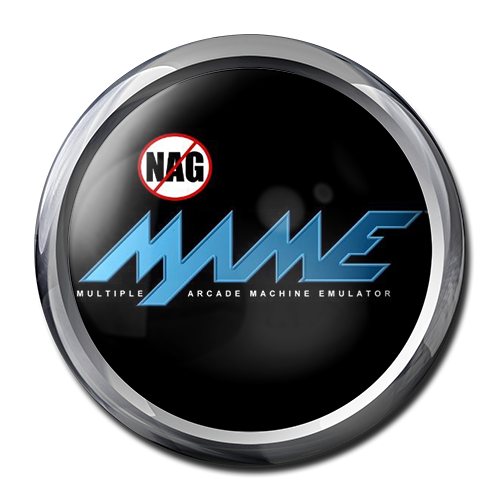


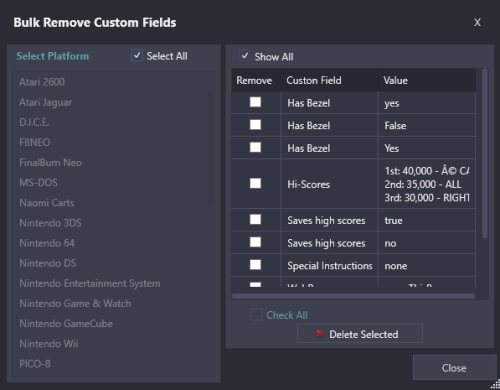
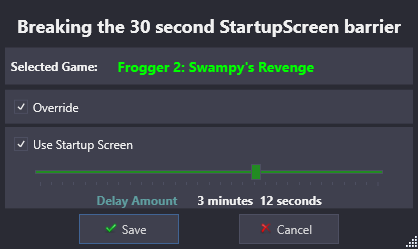

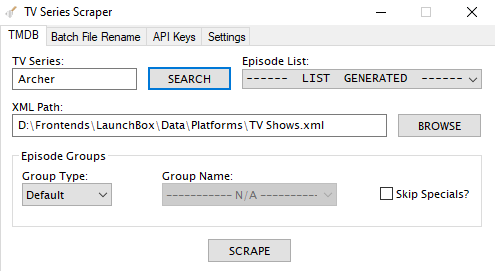
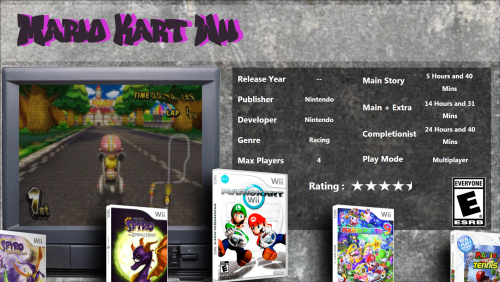

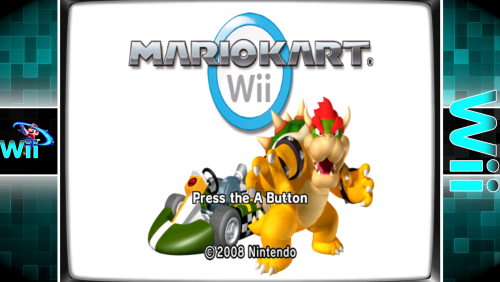
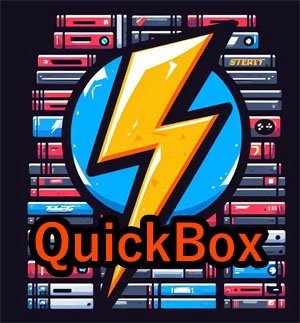

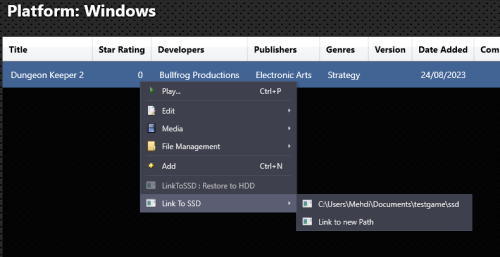
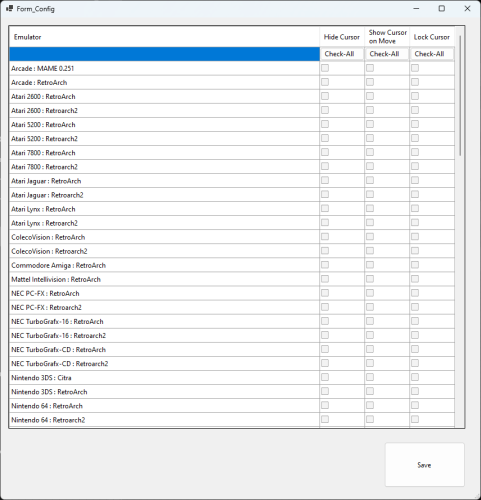
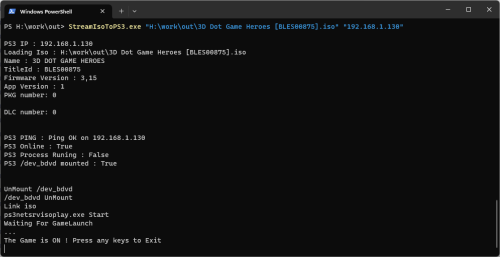



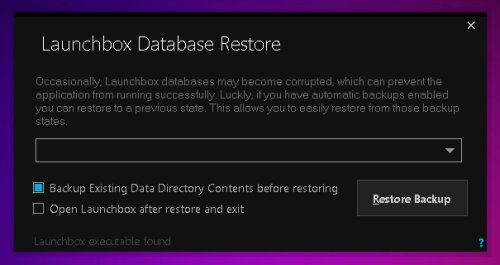
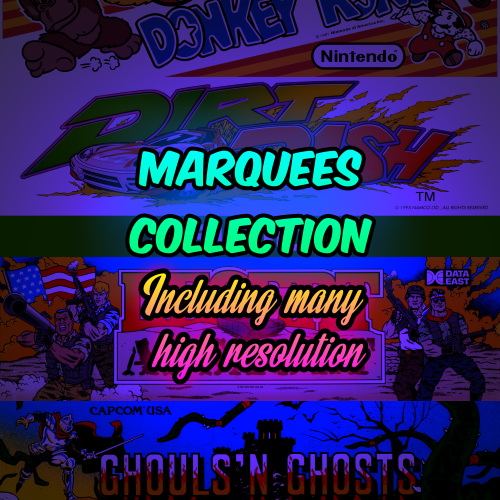
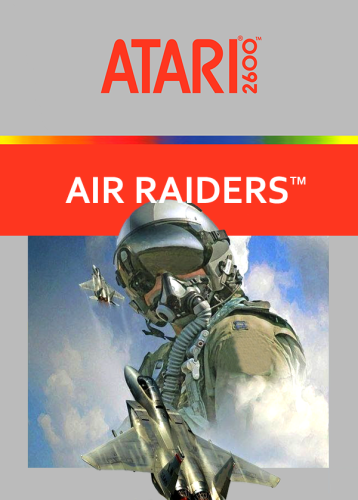
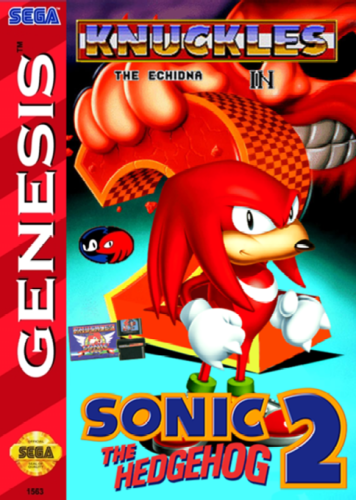

.thumb.png.7e3e30a8a12a702e05af7309eb087e82.png)
.thumb.png.6caf257a0459ccd133c470a97c7eaa6a.png)
